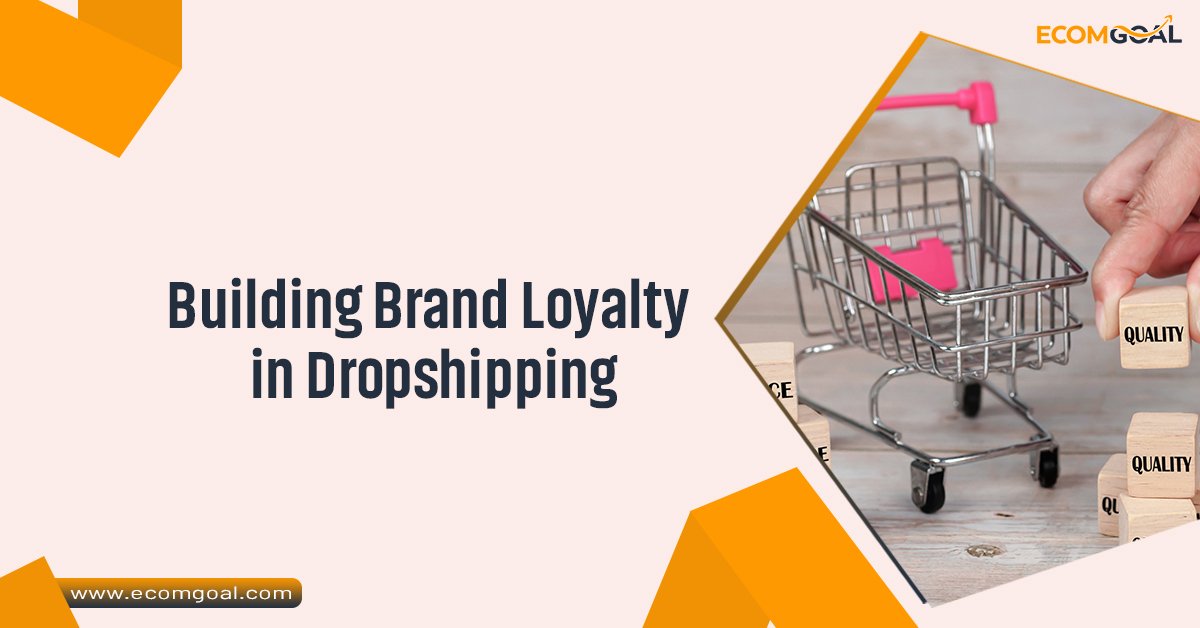
In the fast-paced and competitive world of dropshipping, building brand loyalty in dropshipping can be the differentiating factor that sets your business apart. Unlike traditional retail models, dropshipping businesses rely heavily on customer trust and satisfaction, as they have limited control over inventory and shipping processes. This blog delves into actionable strategies to building brand loyalty in dropshipping industry, ensuring long-term growth and profitability.
Understanding Building Brand Loyalty in Dropshipping
Brand loyalty is the consistent preference of customers for a particular brand over its competitors. It stems from a combination of positive experiences, trust, and emotional connection. For dropshipping businesses, fostering brand loyalty means more than just repeat purchases—it means turning customers into advocates who promote your brand to others.
Key benefits of brand loyalty include:
- Repeat Business: Loyal customers are more likely to return, providing a stable revenue stream.
- Higher Customer Lifetime Value: Loyal customers tend to spend extra over time.
- Cost Efficiency: Retaining existing customers is more inexpensive than acquiring new ones.
- Word-of-Mouth Marketing: Satisfied customers often refer friends and family.
Challenges of Building Brand Loyalty in Dropshipping
Dropshipping businesses face unique challenges, including:
- Limited Control Over Fulfillment: Delays, errors, or quality issues from suppliers can negatively impact customer satisfaction.
- High Competition: With low entry barriers, the dropshipping market is saturated with competitors.
- Lack of Physical Interaction: Unlike traditional retail, customers can’t physically interact with products before purchase, leading to potential trust issues.
- Inconsistent Branding: Working with multiple suppliers can result in inconsistent packaging and product presentation.
Strategies to Building Brand Loyalty in Dropshipping
1. Deliver Exceptional Customer Service
Customer service is a cornerstone of brand loyalty. Since dropshipping relies on third-party suppliers, it’s crucial to mitigate potential issues with proactive communication and quick resolutions.
- 24/7 Support: Offer round-the-clock customer support through live chat, email, or social media.
- Empathy and Personalization: Address customers by name, understand their concerns, and provide tailored solutions.
- Clear Communication: Keep customers informed about order statuses, shipping delays, or any potential issues.
2. Build a Strong Brand Identity
A unique & consistent brand identity fosters emotional connections with customers.
- Logo and Design: Invest in professional logo design and a cohesive visual aesthetic.
- Brand Story: Share your brand’s mission, vision, & values to create a compelling narrative.
- Social Media Presence: Engage with your audience through platforms like Instagram, TikTok, or Pinterest, where visual branding can thrive.
3. Focus on Quality Control
While you may not control the production process, you can vet suppliers rigorously to ensure product quality.
- Sample Products: Order samples from potential suppliers to verify quality before listing products on your store.
- Supplier Relationships: Build strong relationships with reliable suppliers to minimize errors and ensure timely fulfillment.
- Product Descriptions: Provide accurate, detailed descriptions to set customer expectations correctly.
4. Enhance the Post-Purchase Experience
The customer journey doesn’t end at checkout. Focus on creating a memorable post-purchase experience.
- Order Tracking: Offers real-time tracking to keep customers updated.
- Personalized Thank-You Notes: Include a thank-you email or digital message to express appreciation.
- Loyalty Programs: Reward repeat customers with discounts, exclusive all offers, or points-based rewards.
5. Leverage Customer Feedback
Customer feedback is invaluable for understanding pain points & areas for improvement.
- Surveys & Reviews: Encourage customers to share their opinions & their experiences.
- Respond to Feedback: Address negative reviews promptly and constructively.
- Implement Changes: Use feedback to improve products, services, & processes.
6. Offer Competitive Pricing and Value
While pricing is important, offering exceptional value can outweigh cost concerns.
- Bundle Deals: Create product bundles at discounted rates.
- Free Shipping: Offer free or discounted shipping thresholds to incentivize larger purchases.
- Exclusive Offers: Provide loyal customers with quick access to sales or exclusive products.
7. Content Marketing and Education
You can engage your audience with expensive content that aligns with their interests.
- Blogs and Tutorials: Share helpful tips, product guides, or industry insights.
- User-Generated Content: Showcase customer photos or testimonials on your website and social media.
- Email Marketing: Send personalized emails with product recommendations, special offers, or updates.
Real-Life Examples of Dropshipping Brand Loyalty Success
- Gymshark: Despite starting as a dropshipping business, Gymshark built a loyal customer base through influencer partnerships, high-quality products, and a strong brand identity.
- MVMT Watches: This brand leveraged social media marketing and sleek, minimalist branding to cultivate a dedicated following.
- Blueland: Known for eco-friendly cleaning products, Blueland focused on sustainability and customer education to earn loyalty.
Measuring Brand Loyalty
To evaluate the effectiveness of your loyalty-building strategies, track these metrics:
- Customer Retention Rate (CRR): Percentage of customers who make repeat purchases.
- Net Promoter Score (NPS): Measures customers likelihood to recommend your brand.
- Average Order Value (AOV): Indicates if loyalty programs are driving higher spending.
- Customer Lifetime Value (CLV): Tracks the total revenue generated by a single customer over time.
- Churn Rate: Monitors the rate at which customers stop engaging with your brand.
Conclusion
Building brand loyalty in dropshipping requires a strategic approach that prioritizes customer experience, quality, and trust. By delivering exceptional service, creating a strong brand identity, and continuously engaging with your audience, you can turn one-time buyers into lifelong advocates. In a competitive market, brand loyalty isn’t just an advantage—it’s a necessity for sustainable success.
Start implementing these strategies today and watch your dropshipping business transform from a transactional operation to a beloved brand.

Hello, I am an E-commerce Expert with extensive experience providing services to numerous e-commerce brands and individuals since 2017. My primary areas of expertise include the Amazon, Walmart, and Shopify marketplaces. Linkedin
